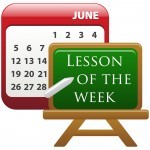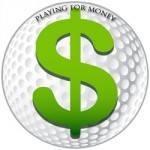Online Lesson: Fuad Sulayman- Width and Sequence
By Wayne | Videos: Online Students

All the things that Fuad would like to do with his swing are good ideas, but as I will show in the video he is already doomed by the time he gets to the top. The key word here is “width”, which is another way to say, “extensor action”, in which the trailing arm attempts to straighten by pushing into the thumb of the leading arm while cocking the wrists. The governor on how much extension can be achieved is the connection between the lead arm and the chest, which must be maintained. Fuad has some trigger issues that should be dealt with, and I would imagine that if he stops leaning back and sitting as he starts his swing it would make extending away from his center much easier. His left arm needs to be bent and away from his body at address, and he must make sure to keep the space intact all the way to the top and in transition down to P5. If he can accomplish this he must then get his lower body to initiate the forward swing while he keeps his head from moving forward of its starting position. When he feels the proper sequence, his shoulder will be pulled by the body and he will have a chance to move his upper left arm in a totally different fashion to where it can pitch in front of his ribcage and shallow the shaft instead of hanging up and back with the shaft getting steeper.
Continue reading



